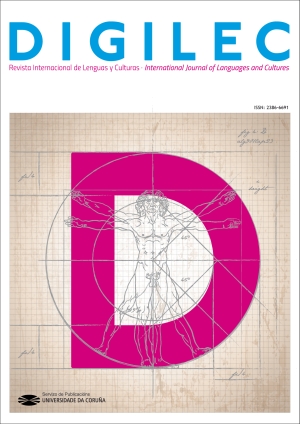Behind Schönberg's pedagogical trail: Dodecaphonism as a means of musical composition in Secondary education
Main Article Content
Abstract
The composer Arnold Schönberg devised a new musical system based on an effective equality between the twelve sounds of the chromatic scale: the dodecaphonism. This author advocated a musical pedagogy based on creative development and a deep musical understanding that integrates rational and sensory aspects. This research analyses the educational potential of this repertoire from the methodological principles of its founder: a group-based composition in the twelve-tone (dodecaphonic) style. Through an action research, an intervention is designed for a Musical Analysis class (Upper Secondary Education), in order to verify the significance of a learning process based on experimentation and teamwork, offering conceptual, procedural and attitudinal readings. Subsequently, a discussion group complements the data in the long term. The results obtained confirm an assimilation of learning regarding the time factor and the development of musical literacy skills. The students’ compositions are adapted to the dodecaphonic stylistic idiomatic, while they reveal identity aspects of their authors. The experience allows establishing the psychoeducational benefits of the twelve-tone repertoire as a means of sound creation in secondary education. Its implementation stimulates an adaptable and inclusive access to musical composition, while promoting the heritage dissemination of lesser-known repertoires.
Keywords:
Downloads
Article Details
References
Bautista, A., Toh, G., Mancenido, Z. Y Wong, J. (2018). Student-Centered Pedagogies in the Singapore Music Classroom: A Case Study on Collaborative Composition. Australian Journal of Teacher Education, 43(11), 1-25. https://ro.ecu.edu.au/ajte/vol43/iss11/1/ [Recuperado el 01/11/2020].
Beineke, V. (2017). Componiendo colaborativamente en la escuela: entre teorías y prácticas en el campo del aprendizaje musical creativo. Revista Internacional de Educación Musical, 5, 31-39. https://journals.sagepub.com/doi/abs/10.12967/RIEM-2017-5-p031-039 [Recuperado el 01/11/2020].
Bloor, M., Frankland, J., Thomas, M. Y Robson, K. (2001). Focus Groups in Social Research. London: Sage.
Cárdenas Soler, R.N., Martínez Álvarez, J.D. y Cremades Andreu, R. (2017). Competencias de lectura y escritura en música. Una propuesta para su asimilación en el currículo escolar. Cuadernos de Lingüística Hispánica, 29, 181-201. https://revistas.uptc.edu.co/index.php/linguistica_hispanica/article/view/5859 [Recuperado el 01/11/2020].
Decreto 86/2015, de 25 de junio, por el que se establece el currículo de la educación secundaria obligatoria y del bachillerato en la Comunidad Autónoma de Galicia. Diario Oficial de Galicia. Galicia, 29 de junio de 2015, núm. 120, pp. 25434-27073. Consultado el 18 de agosto de 2020. https://www.xunta.gal/dog/Publicados/2015/20150629/AnuncioG0164-260615-0002_es.html [Recuperado el 01/11/2020].
Fulka, V. (2017). Arnold Schönberg and Musica Artificiosa. A rationality in the Musical Composition. Musicologica Brunensia, 52, 69-78. https://digilib.phil.muni.cz/handle/11222.digilib/136929 [Recuperado el 01/11/2020].
García Calero, P. y Estebaranz, A. (2005). Innovación y creatividad en la enseñanza musical. Barcelona: Octaedro.
Giráldez, A. (2007a). La composición en el aula de música. En La creatividad en la clase de música: componer y tocar, F. López Rodríguez y S. Arànega (coords.), 27-33. Barcelona: Graó.
Giráldez, A. (2007b). La composición musical en el aula (8-12). En Creatividad en Educación Musical, M. Díaz Gómez y M. E. Riaño (eds.), 97-111. Santander: Universidad de Cantabria.
Gustems Carnicer, J. y Polo Pujadas, M. (2017). Aportaciones pedagógicas del método de composición de Arnold Schönberg. Revista Electrónica Complutense de Investigación en Educación Musical (RECIEM), 14, 267-283. https://doi.org/10.5209/RECIEM.51248 [Recuperado el 01/11/2020].
Hargreaves, D.J. (2002). Música y desarrollo psicológico. Barcelona: Graó.
Hogenes, M., Oers, B., Diekstra, R.F.W. y Sklad, M. (2016). The effects of music composition as a classroom activity on engagement in music education and academic and music achievement: A quasi-experimental study. International Journal of Music Education, 34(1), 32-48. https://journals.sagepub.com/doi/abs/10.1177/0255761415584296 [Recuperado el 01/11/2020].
Kemmis, S. y Mctaggart, R. (1987). Cómo planificar la investigación-acción. Barcelona: Laertes.
Kokotsaki, D. y Newton, D.P. (2015). Recognizing creativity in the music classroom. International Journal of Music Education 33(4), 491-508. https://journals.sagepub.com/doi/10.1177/0255761415607081 [Recuperado el 01/11/2020].
Murillo, A., Riaño, M.E. y Berbel, N. (2019). El aula como caja de resonancia para la creación sonora: nuevas arquitecturas y herramientas tecnológicas para acercar el arte sonoro al ámbito educativo. Revista Electrónica de LEEME, 43, 1-18. https://ojs.uv.es/index.php/LEEME/article/view/14007 [Recuperado el 01/11/2020].
Odena, O. (2013). Creatividad en educación musical: una exploración cualitativa. En Investigación cualitativa en educación musical, M. Díaz Gómez y A. Giráldez (coords.), 99-115. Barcelona: Graó.
Oriol López, M. de los A. (2009). Actitudes que desarrollan los alumnos de secundaria al crear composiciones musicales en grupo. Revista Electrónica Complutense de Investigación en Educación Musical, 6(1), 1-10. https://revistas.ucm.es/index.php/RECI/issue/view/2136 [Recuperado el 01/11/2020].
Paynter, J. (1999). Sonido y estructura. Madrid: Akal.
Paynter, J. y Aston, P. (1970). Sound and Silence. Classroom Projects in Creative Music. Londres: Cambridge University Press.
Pepiol Martí, M. (2013). La pedagogía de la nueva música. Webern como educador. Historia de la educación: Revista interuniversitaria, 32, 185-207. https://dialnet.unirioja.es/servlet/articulo?codigo=4501430 [Recuperado el 01/11/2020].
Zaragozá, J. L. (2009). Didáctica de la música en la educación secundaria. Competencias docentes y aprendizaje. Barcelona: Graó.


